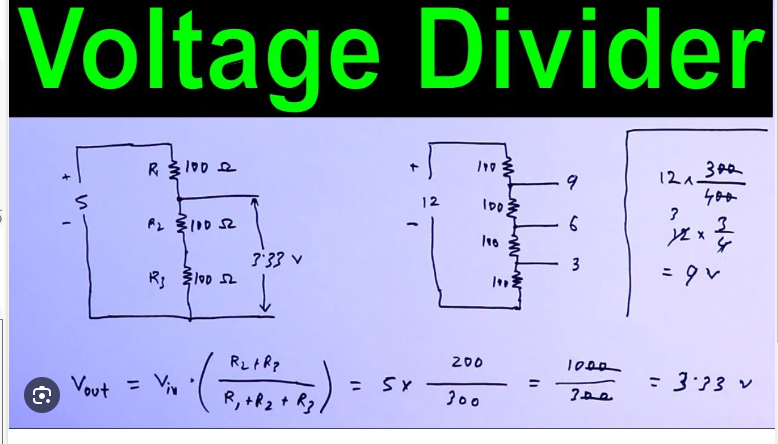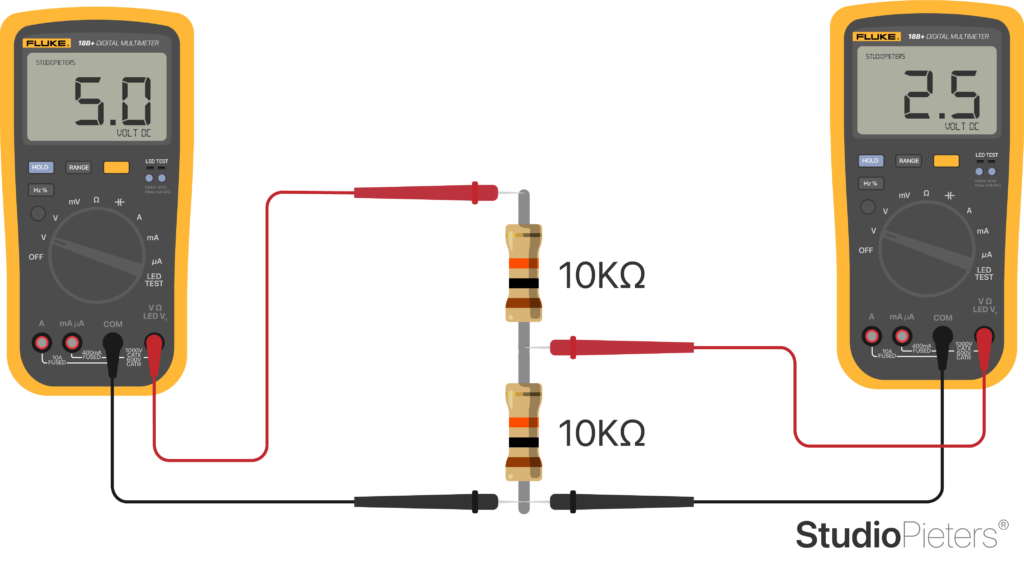The voltage divider rule is a cornerstone of electronics and electrical engineering, used to determine the voltage drop across various components in a series circuit. This fundamental principle is essential in both basic and complex circuit designs, including those managed by eTAZ Systems. In this article, we’ll explore where you apply the voltage divider rule, why it is significant, and how you use it in various scenarios, along with a comprehensive FAQ section.
Understanding the Voltage Divider Rule

The voltage divider rule states that in a series circuit, the voltage drop across any resistor (or component) is proportional to its resistance relative to the total resistance of the series. The rule can be expressed mathematically as:
Vx=Vin×RxRtotalV_x = V_{in} \times \frac{R_x}{R_{total}}Vx=Vin×RtotalRx
where:
- VxV_xVx is the voltage across the resistor RxR_xRx,
- VinV_{in}Vin is the total input voltage,
- RxR_xRx is the resistance across which the voltage is being calculated,
- RtotalR_{total}R total represents the total of all resistances in the series
This principle is crucial in a multitude of practical and theoretical electronic applications.
Applications of the Voltage Divider Rule
- Voltage Regulation
In power supply design, engineers use voltage dividers to produce reference voltages or to reduce higher voltages. This is essential for creating stable and adjustable power supplies. For example, adjustable voltage regulators use voltage dividers to set the output voltage by dividing part of the input voltage. - Signal Conditioning
In analog signal processing, engineers use the voltages divider rule to adjust signals before they enter other circuits. For instance, in sensor applications, a voltages divider can scale down a sensor’s output to match the input range of an analog-to-digital converter (ADC), ensuring accurate signal processing and data collection. - Biasing of Transistors
The voltages divider principle assists in determining the operating point of transistors in amplifier circuits. - . By providing the correct base voltage, designers ensure that the transistor operates in the desired region (cutoff, active, or saturation), which is crucial for optimal performance.
- Analog Meters
Analog voltmeters and multimeters use voltage dividers to measure voltages accurately. The designers created the meters to divide the input voltage to a manageable level, ensuring precise readings. - Oscillator Circuits
Voltage dividers influence the frequency of oscillator circuits, such as those in clock generators. By adjusting the resistances, engineers can control the oscillation frequency, which is vital for timing applications in digital circuits. - Feedback Networks
In control systems, feedback networks often use voltage dividers to provide feedback signals. These signals are crucial for adjusting and stabilizing the behavior of control systems, ensuring they operate within desired parameters. - Testing and Calibration
To test and calibrate electronic equipment, technicians use voltage dividers to provide known reference voltages. This helps ensure instruments function correctly and offer accurate measurements.
FAQ Section
Q1: What is the main purpose of using the voltage divider rule?
A1: The voltage divider rule determines the voltage across individual components in a series circuit. It helps engineers calculate how resistors or components distribute the input voltage, aiding in designing and analyzing electronic circuits.
Q2: How does the voltage divider rule apply in voltage regulators?
A2: Voltage regulators use the voltage divider rule to set the output voltage by dividing part of the input voltage. Adjusting resistor values in the divider circuit helps achieve a stable and adjustable voltage supply.
Q3: Can the voltage divider rule be used in AC circuits?
A3: Yes, the voltage divider rule applies to AC circuits as well. In AC circuits, impedance (including resistance and reactance) replaces resistance, and calculations must account for the phase difference between voltage and current. The principle remains the same: the voltage across a component is proportional to its impedance relative to the total impedance.
Q4: What are the limitations of the voltage divider rule?
A4: The rule assumes ideal resistors and steady-state circuits, not accounting for factors like parasitic resistances, loading effects, or non-linear components. These factors can affect the accuracy of voltage divider calculations in practical circuits.
Q5: How is the voltage divider rule used in signal conditioning?
A5: In signal conditioning, the voltage divider rule scales down signals to fit the input range of other components, such as ADCs. Adjusting resistor values ensures the signal is within the acceptable range for accurate measurement and processing.
Q6: Why is the voltage divider rule important in biasing transistors?
A6: The rule is essential for setting the correct base voltage in transistors, ensuring they operate in the desired region (cutoff, active, or saturation). This is crucial for the proper functioning of amplifier circuits and other transistor-based devices.
Q7: Can the voltage divider principle be used in digital circuits?
A7: While primarily used in analog circuits, the voltages divider rule can also be applied in digital circuits, especially in analog-to-digital conversion or interfacing digital circuits with analog signals. It helps ensure voltages are within the acceptable range for digital components.
Q8: How does the voltage divider rule aid in impedance matching?
A8: In impedance matching, the rule helps adjust the impedance of different circuit stages to maximize power transfer and minimize signal reflections. Using voltage dividers for impedance matching ensures optimal performance and signal integrity in communication systems.
Q9: What is the impact of loading effects on voltage divider calculations?
A9: Loading effects occur when the impedance of the load affects voltage distribution, leading to inaccuracies. To minimize these effects, ensure the load impedance is significantly higher than the impedance of the voltages divider.
Q10: How can voltage dividers be used for testing and calibration?
A10: Voltage dividers provide known reference voltages for testing and calibration. Comparing the output of a device with these reference voltages helps engineers check and calibrate devices to ensure correct operation and accurate measurements.
Conclusion
The voltage divider rule is a fundamental concept in electronics with applications ranging from voltages regulation and signal conditioning to impedance matching and sensor calibration. At eTAZ Systems, understanding and applying this rule is vital for designing and analyzing electronic systems, ensuring their efficiency and reliability. By utilizing the voltages divider rule, engineers can develop dependable circuits and contribute to successful technological solutions.

Pingback: Hardware Design Near Me -